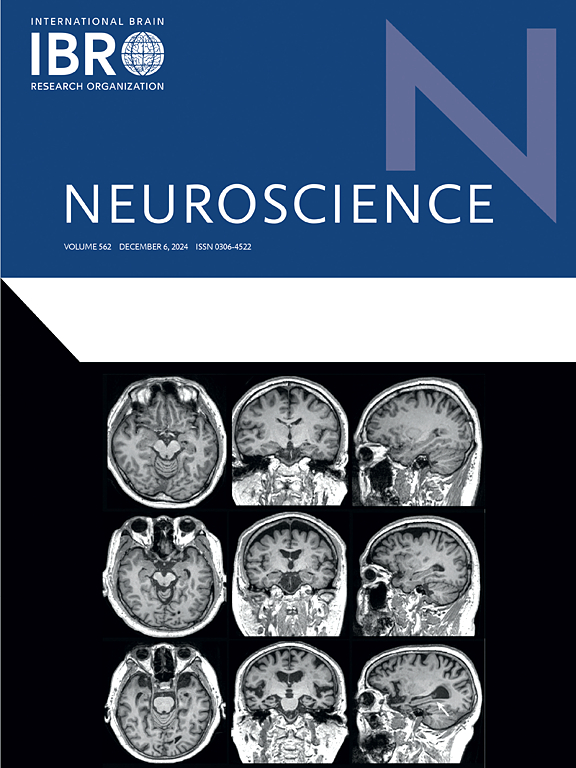在大鼠 SCI 模型中,一种苯乙肼类似物能有效清除丙烯醛并保护神经,而不会抑制单胺氧化酶。
IF 2.9
3区 医学
Q2 NEUROSCIENCES
引用次数: 0
摘要
氧化应激被广泛认为是脊髓损伤(SCI)后功能缺陷的关键因素。氧化应激和脂质过氧化衍生的醛类物质如丙烯醛在脊髓损伤病理中起关键作用,因此成为有价值的治疗靶点。本研究介绍了一种新的苯肼类似物(PhzA),旨在保留苯肼(Phz)清除丙烯醛的能力,同时通过基于结构的改性去除其不良的单胺氧化酶(MAO)抑制作用。使用挫伤性脊髓损伤大鼠模型,我们发现PhzA在脊髓损伤急性和慢性阶段都能显著降低丙烯醛水平,而MAO抑制作用最小。此外,PhzA减少过度的小胶质细胞和星形胶质细胞激活,抑制炎症和胶质细胞形成。此外,与未治疗的大鼠相比,经phza治疗的大鼠在损伤后28 天内表现出运动功能的显著改善和机械超敏反应的减少。这些发现进一步强调了醛在脊髓损伤病理中的重要作用,并加强了丙烯醛可以作为减轻脊髓损伤后神经退行性变的有效治疗靶点的概念。这些结果还表明,通过对现有的再利用药物(如Phz)进行基于结构的修饰来扩大丙烯醛清除药物的发现,是一种可行的策略,有可能加速临床应用。这一努力也可能有益于脊髓损伤以外的一系列神经疾病和损伤,其中丙烯醛涉及,促进数百万患者的健康。本文章由计算机程序翻译,如有差异,请以英文原文为准。

An analog of phenelzine demonstrates effective acrolein scavenging and neuroprotection without monoamine oxidase inhibition in a rat SCI model
Oxidative stress is widely recognized as a critical factor in the functional deficits after spinal cord injury (SCI). Oxidative stress and lipid peroxidation-derived aldehydes such as acrolein are known to play a key role in SCI pathology and have therefore emerged as valuable therapeutic targets. This study introduces a novel phenelzine analogue (PhzA), designed to retain the acrolein scavenging capability of phenelzine (Phz) while removing its undesirable monoamine oxidase (MAO) inhibition effects through structure-based modification. Using a rat model of contusion SCI, we showed that PhzA significantly reduced acrolein levels in both the acute and chronic stages of SCI with minimal MAO inhibition. In addition, PhzA reduced excessive microglial and astrocytic activation, dampening inflammation and gliosis. Furthermore, PhzA-treated rats exhibited significant improvements in motor function and reduction in mechanical hypersensitivity for up to 28 days post-injury compared to untreated rats. These findings further underscore the crucial role of aldehydes in SCI pathology and strengthen the notion that acrolein could serve as an effective therapeutic target for mitigating post-SCI neurodegeneration. These results also indicate that the expansion of acrolein-scavenging drug discovery through structure-based modification of existing repurposed drugs, such as with Phz, is a viable strategy with the benefit of a likely accelerated path towards clinical application. This effort may also benefit a range of neuronal diseases and injuries beyond SCI where acrolein is implicated, advancing the health of millions of patients.
求助全文
通过发布文献求助,成功后即可免费获取论文全文。
去求助
来源期刊

Neuroscience
医学-神经科学
CiteScore
6.20
自引率
0.00%
发文量
394
审稿时长
52 days
期刊介绍:
Neuroscience publishes papers describing the results of original research on any aspect of the scientific study of the nervous system. Any paper, however short, will be considered for publication provided that it reports significant, new and carefully confirmed findings with full experimental details.
 求助内容:
求助内容: 应助结果提醒方式:
应助结果提醒方式:


